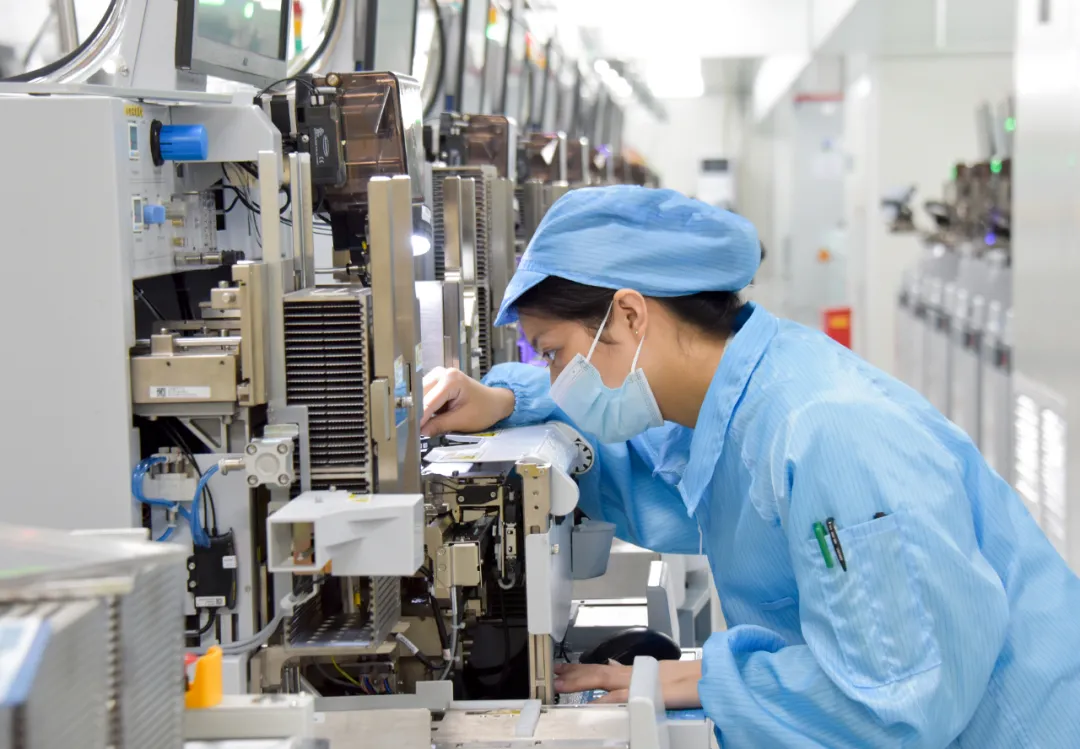31
2024
-
12
"Screen" and "Chip": Calmly Observing Gedian, Precisely Aligning with a Trillion-Dollar Industry Cluster
Recently
Journalists enter Ezhou City's Gedian Economic and Technological Development Zone.
Feel the self-reliance and strength of China's domestic chip industry, and
Big wisdom in a small package
The chip is the most critical component of an LED display screen. From the chip itself to the final display, it undergoes a crucial step—packaging—which serves as the bridge enabling communication between the tiny chip and the external circuitry.
How to swiftly encapsulate massive amounts using intricate "needlework" techniques
Micrometer-scale LED chips?
The first LED chip packaging enterprise in Hubei
You can find the answer at Ezhou Sinyopto Optoelectronics Co., Ltd.

Sinyopto Optoelectronics Production Facility
Inside Sinyopto's 100,000-level dust-free cleanroom, machines roar and electric sparks flicker as the packaging line operates at full capacity. One by one, Mini LED chips undergo processes like die bonding, wire bonding, dispensing, drying, and dicing—transforming into Mini LED beads measuring just 0.4 to 2 millimeters in diameter—before being carefully embedded into reels...
"Thanks to our three core technologies—MiP (Massive Transfer Packaging), RFN (High-Robustness Flat No-Lead Packaging), and BUF (Black Underfill Technology)—we’re on track to achieve 500 million yuan in revenue this year," proudly stated Wang Jianhua, Deputy General Manager of Sinyopto Optoelectronics.
Why does a compact LED chip package pack such big innovation? "Currently, Mini/Micro LED chips have already shrunk to below 100 micrometers in size. Take a 4K screen as an example—over 24 million micrometer-scale chips need to be precisely transferred. Yet, using conventional chip-transfer methods would require repeating the process 24 million times," says Wang Jianhua. "MiP technology, however, enables the rapid and accurate 'massive transfer' of millions of these tiny microchips onto PCB boards, dramatically boosting production efficiency, significantly cutting costs, and enhancing flexibility for applications like wearable devices and transparent displays."
From "Optoelectronics China" Advances Toward "Optoelectronics World" Sinyopto's optoelectronic packaged LED beads have "lit up" major events and activities such as the Beijing Winter Olympics, the Chengdu Universiade, CCTV's Spring Festival Gala, and the UEFA European Championship. Meanwhile, as one of the supply chain partners for the LED screens at the Paris Olympics, Sinyopto's new GF2727 LED bead product has been featured in the transparent light façade of the Centre Pompidou National Art Center in France.

The transparent glass curtain wall of France's Centre Pompidou
Just across the street, Ruihua Optoelectronics supplies its Mini LED backlit packaging products to major display manufacturers such as China Star Optoelectronics Technology in Wuhan's Optics Valley, BOE Technology, and Tianma Microelectronics—companies that use these components to create cutting-edge LED displays. According to Zou Miaobo, head of the company’s administrative service center, Ruihua Optoelectronics allocates 15% of its annual sales revenue to research and development. The company’s production lines can churn out anywhere from 6,000 to 8,000 Mini/Micro LED pixels per hour, with a product yield rate consistently exceeding 99.5%. As a result, their innovative solutions have been warmly embraced by the market.
"Primary chain in Wuhan, supporting infrastructure in the metropolitan area" In recent years, Gedian Economic Development Zone has aligned itself with Wuhan New City’s innovation, industry, and resource chains, precisely connecting with Wuhan’s trillion-level “Optoelectronics-Chip-Screen-End-Network” industrial cluster. Meanwhile, the zone is accelerating joint efforts with Optics Valley to jointly build a 100-square-kilometer hub for the optoelectronics and information technology industry.
Taking San'an Optoelectronics as the upstream R&D company, Gedian Economic Development Zone has attracted LED chip packaging firms—Sinyopto Optoelectronics and Ruihua Optoelectronics—as midstream players. These are closely integrated with downstream LED module integration companies such as Guanggu Huaxing Optoelectronics and Tianma Microelectronics, enabling a short-cycle, closed-loop industrial chain. Meanwhile, San'an Optoelectronics, Sinyopto Optoelectronics, and Ruihua Optoelectronics have already joined forces in technological research and development.
“You prioritize the ‘screen,’ while I focus on the ‘chip.’ We’re strategically positioned differently yet work together seamlessly with Optics Valley,” explained Shi Hao, Deputy Director of the Economic Development Bureau in Gedian Economic Development Zone. Ge Dian has successively attracted numerous upstream and downstream enterprises, now hosting 38 related industrial projects with a total investment of 36.5 billion yuan. Additionally, an industry fund has been established to provide targeted support to key optoelectronics enterprises in areas such as company listings, investment expansion, import-export activities, and intellectual property rights.
Currently, the optoelectronics display industry in the Wu'e region has achieved mutual benefits, and its emerging display device industry cluster has been selected as one of Hubei Province's first batch of strategic emerging industry clusters.


